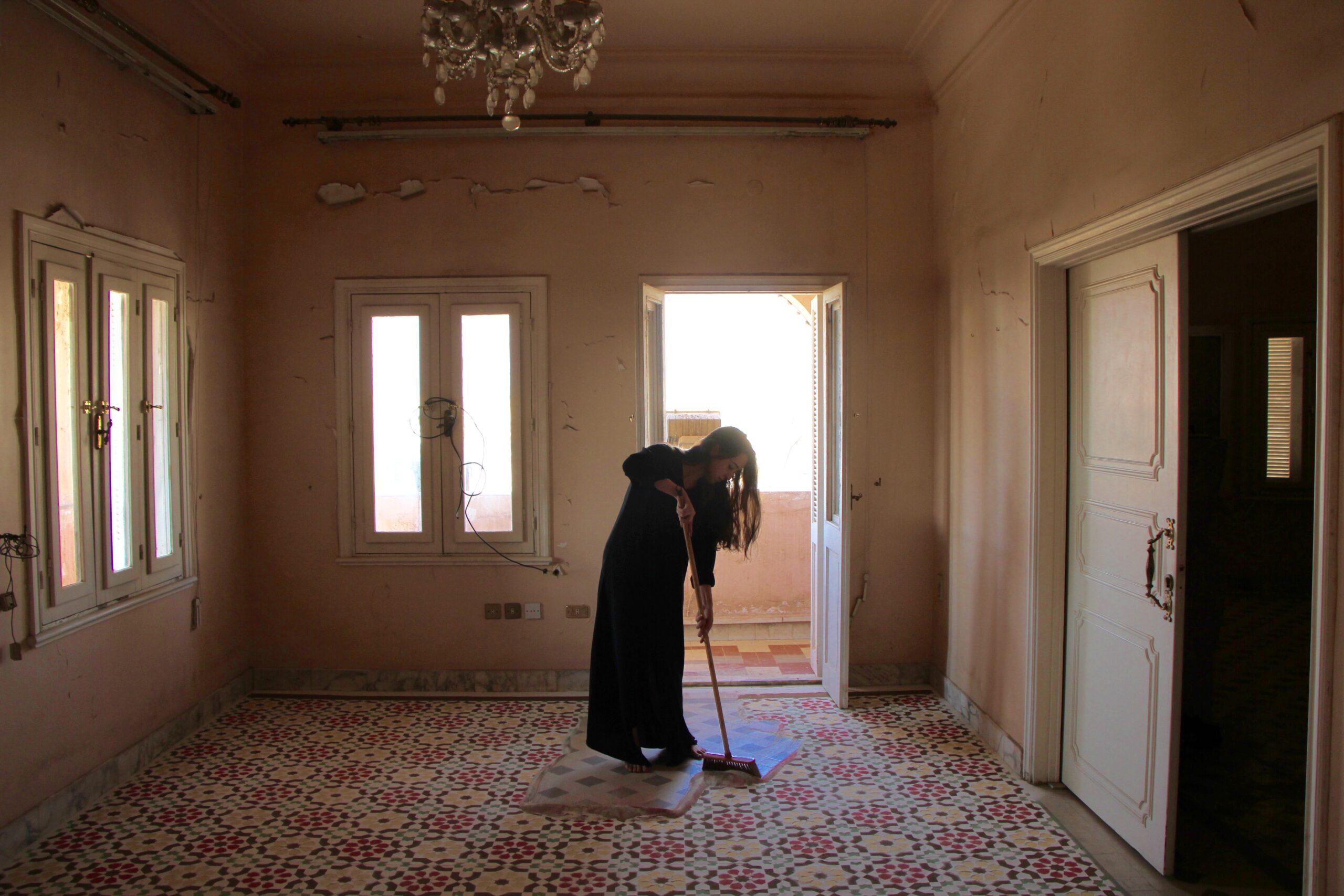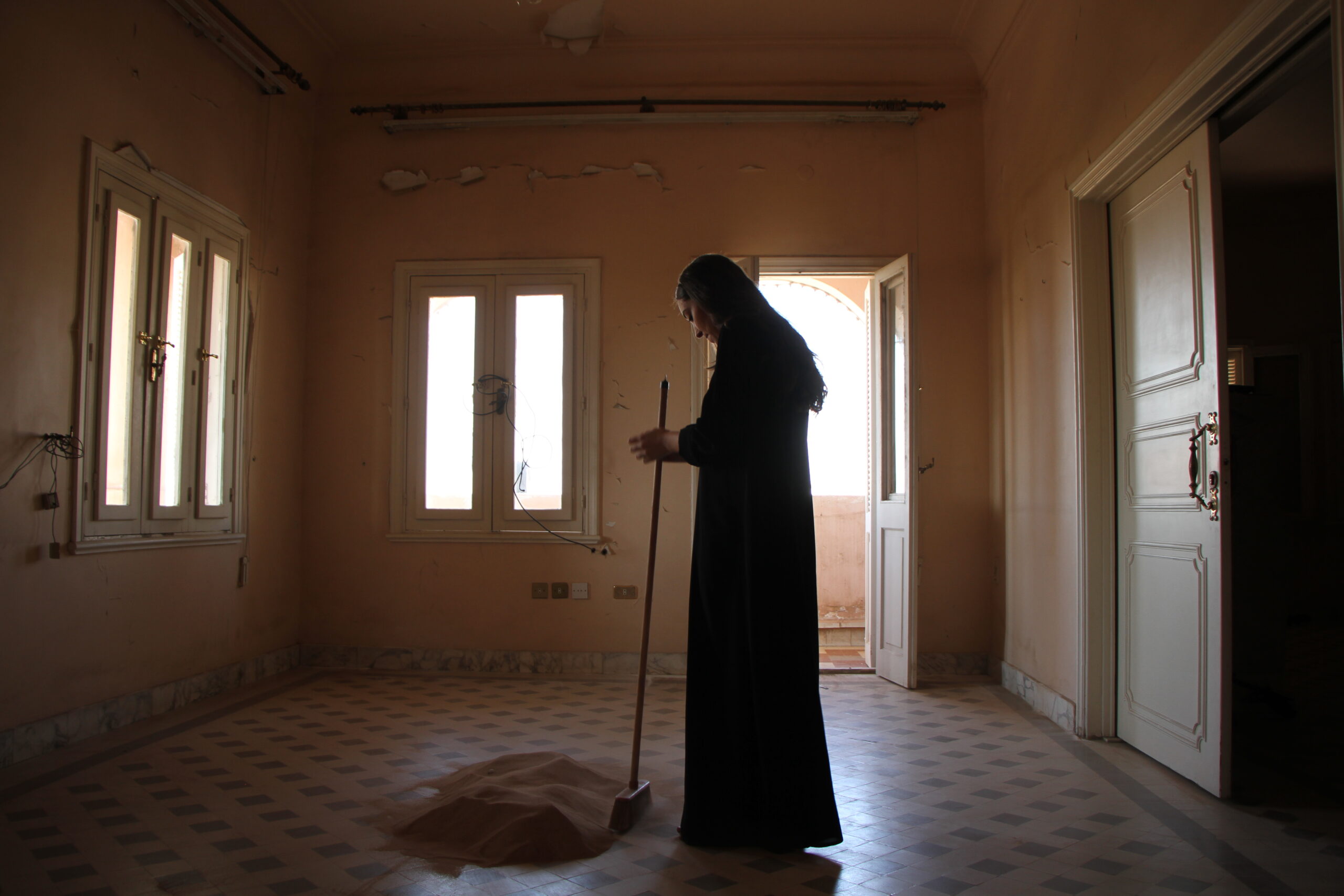News
At the cusp of colonisation and modernisation, the museum, an institution shaped by the imperial idea to identify, classify, and document objects from the stolen lands, was underwritten by the act of care. Instrumental to the appearance of glorification built into the objects of colonisation, the term ‘care’ within the operation of the museum is a two-edged sword: it establishes the White supremacy of cultural heritage and technical strategies aimed at preserving artefacts. Both envisioned to construct an identity-driven meaning for posterity. The markers of distortion visible in the objects necessitated care in the hands of conservation scientists. The repair of the material culture sustained historical evidence for a cartographic divide between the Global North and the Global South. In the wake of the liberation of colonised nation-states, as the exercise to loot an object of the Other gradually receded, the new forms of settler-colonisation colonial project unfolded. The weathering of the object, subjected to decay and rupture, is extended to the human tribe pushed to erasure, historical sites led to vandalism and cultural institutes vulnerable to defacement.
The recent amplification of the word ‘care’ in the field of visual arts and curation gains social weight, particularly towards individuals and communities, who are pushed to the margins of cultural participation. The ongoing erasure of demography, under the cover of colonial development projects, resurrected the demand for care in the hands of those who have been rendered unmindful by the documenter of dominant history. This time, care is part of a broader ethics of relationality and responsibility to establish solidarity amongst the dispossessed. From this point of care, entailed with conscience, anchors multidisciplinary artistic intervention by Saudi-Palestinian artist Dana Awartani. The translocal identity, dovetailed with a peripatetic life, opens an opportunity for Awartani to be continuously inspired by historic and traditional architecture wherever she visits. “Many of the themes and materials in my practice cross borders and cultures, reflecting shared values and traditions that reappear in different places.” Her practice is situated within a research inquiry into the twin sites of colonial violence and ideological warfare on architectural patrimony as a way of silencing the collective memory of the people and their land. Precisely, Awartani’s body of work serves as a spatial elegy to the systematic obliteration of historically significant sites in Palestine and the Arab world.
![]()
In the face of ongoing genocide in Gaza by Israeli Occupation Forces, the textile intervention Let Me Mend Your Broken Bones by Awartani restores and memorialises the architectural destruction inflicted upon key UNESCO-designated sites in Gaza, including the Great Omari Mosque, the Church of St. Porphyrius, Anthedon Harbour and Hamam Al Samra. The historical sites embody the layered traces of sacred history and urban development under the successive thrones of the Byzantine, Mamluk, Ayyubid and Ottoman dynasties. Awartani arrived at this visual intervention of the colourful palette of the silk panels to express resilience against the ceaseless practice of demolition. The clear points of cuts highlight the cartographic marker of a tear borne by a heritage site subjected to refusal to exist. Awartani’s conscientious efforts are mirrored in her collaboration with Kerala-based artisans who (re)inscribe the Arab history of the colonial past with their use of pigments made of medical herbs for traditional dyeing techniques. The labour-intensive textile work Let Me Mend Your Broken Bones becomes a site of care and healing to echo a reparative feminist ethic within material culture.
Even if the elements of architecture are integral to Awartani’s practice, she looks beyond the material and structure of buildings. “The idea is to consider how they can embody belonging, memory and serve as containers or markers of cultural heritage,” she says. “My focus is primarily on historic monuments drawn to their capacity to hold collective memory and a shared sense of belonging.” This is acutely visible in her site-specific installation, Standing by the Ruins, which draws from the classical Arabic poetic trope wuquf ‘ala al-atlal (standing at the ruins), a form that emerged in pre-Islamic qasida and reached seminal expression in the work of Imru’ al-Qais. The invocation of ruin poetry foregrounds themes of loss, displacement and temporal rupture, which resonate with Awartani’s practice, dedicated to transforming architectural destruction into affective spatial encounters.
![]()
Trained in Traditional Arts from The Prince’s School of Traditional Arts, London, Awartani’s ornate crafts carry a striking three-dimensionality that bridges her training in sacred geometry and drawing with the language of architectural monumentality. “With Standing By The Ruins, the tile works refer to the techniques commonly used across Morocco, North Africa, and South Asia to cover floors and walls,” she shares. The first iteration of the work was installed in 2019 at the Rottembourg Fort, standing at the brink of Rabat. This was followed by a homage to the destruction of the Grand Mosque of Aleppo during the Syrian Civil War in 2021, with an installation in Aleppo. The latest iteration of Standing by the Ruins, presented at the first edition of Bukhara Biennial Recipes for Broken Hearts (2025), curated by Diana Campbell, focuses on Hammam Al Samara, a Mamluk-era bathhouse in Gaza that has been destroyed by the Israeli Occupation Forces. The work is a reconstruction of the geometric tile patterns that once adorned the hammam’s floors, made with Palestinian clay and realised in collaboration with Uzbek craftsmen in Bukhara. Palestinian clay was quintessential to the artist, which is a material connection to place and memory, bridging the loss of the site with the experience of displacement shared by many. “Every project is, in essence, a process of mending a broken heart,” she states. “The heartbreak is embedded in the material itself: in the earth and the soil, which for those of us living in exile and diaspora, can never fully possess.” This is commensurate with the title of the Bukhara Biennial.
Like Awartani’s reaffirmation of the knowledge value of the textile’s practical quality with Let Me Mend Your Broken Bones, the installation Come, let me heal your wounds. Let me mend your broken bones is an expansive requiem for architectural sites lost to armed conflict and settler-colonial takeover across eight Arab countries: Palestine, Saudi Arabia, Syria, Tunisia, Libya, Iraq, Egypt and Yemen. Avoiding the geographical logic of borders and boundaries, the installation gives life to an archive of loss with nearly 400 tears stitched into the silk fabric. The use of a fading textile technique is a counter to the impersonal look of restoration. The time-based practice of repair evokes a displaced mapping of cultural erasure, opposed to nationalist histories. With a reframing of craftsmanship and traditional architectural knowledge, Awartani builds on the healing gestures as a radical tool of cultural resistance.
With the dawn of the twentieth century, the influx of European modernist sensibility was inescapable to the world of Arabs. Jeddah, home to Awartani’s grandparents, was no exception. The cosmopolitan lifestyle exemplifies a transitional typology from traditional Hejazi design to the Eurocentric modernist forms adopted by Jeddah’s elite. The gradual languish of traditional Islamic tilework, once ubiquitous across domestic and sacred spaces in the Arab world, a corollary of urban development, sets the course for Awartani’s performance I Went Away and Forgot You. A While Ago I Remembered. I Remembered I’d Forgotten You. I Was Dreaming. Its documentation in a video format underscores the decay of residential structure, which acts as a microcosmic narration of geometric floor patterns made from locally sourced sand, tinted by natural pigments. She sweeps the finished piece with tiles to comment on the effacing of regional architectural identities. The video installation captures the swift cleaning of the floor by Awartani to symbolically register remembrance and critique of architectural ornament as both a mnemonic device and a site of contestation.
Awartani’s video installation Listen to My Words, expanding on her previous work Jali, is an exploration of poetry written by female authors. Spanning pre-Islamic to 12th-century literary traditions, these verses are voiced by contemporary Saudi women—a lyrical rendering of historical expressions on longing, desire and spiritual introspection omitted from patriarchal historiographies. The recitation of the poetry is synchronised with the visual composition arising out of embroidered textile panels referencing the jali screen and mashrabiya. These architectural typologies are synonymous with female seclusion and surveillance in Mughal and Islamic architecture. The layer of geometry and voice engenders a meditative and quasi-sacred environment in which abstract form and subaltern text amalgamate. Through this embodied spatial practice, Awartani reclaims both architectural and poetic forms as an apparatus for feminist resilience.
The scale of erasure across the Middle East, at large, and genocide in Palestine, in particular, with an attempt to eradicate a people along with their culture and identity, is a palpable reality. Awartani hopes, with her work, that “people will come to value and defend these sites with the same urgency and care that is so often extended to Western monuments.” The rupture in the present state of the architecture demands repair through the folds of the past with a touch of ‘care’ for posterity to discern the history it personifies. The politics of care to overcome erasure—whether through war, urban development or cultural amnesia—in the hands of Awartani, have a double bind: intentional and evidential. The former entails attentiveness to materials: earth pigments, hand-cut tiles and embroidered textiles. The latter digs deeper into the memory of what is being lost, what can be reignited and what must be preserved. This is poignantly encapsulated in her own words: “As an Arab artist from a region deeply scarred by destruction, my practice is rooted in healing.” In Arab states, her work interacts with a rapidly transforming cultural landscape, where modernisation comes at the expense of historical fabric. In Palestine, it encounters the trauma of occupation, fragmentation and exile. In doing so, she defies the museological impulse to freeze Arab and Islamic visual culture as a relic, but her interventions let these forms breathe and speak in the present tense. The living architecture of care, Awartani’s art is a conduit between continents and centuries. It epitomises textures of the past, urgency of the present and possibilities of a future where cultural memory is not limited to the terrain of casualty, but rather defines the point of arrival for remembrance.
Words: Dilpreet Bhullar

